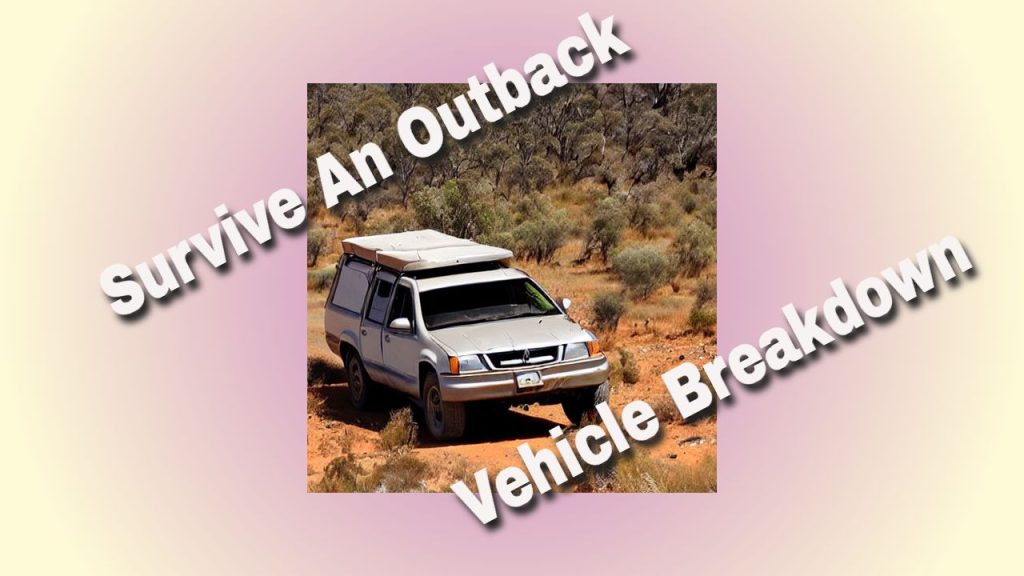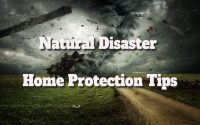Survive An Outback Vehicle Breakdown
Survive An Outback Vehicle Breakdown
Thousands of kilometres of desert highways connect cities and settlements to important supply lines throughout Australia. Can you survive a vehicle breakdown in the middle of nowhere?
Driving on these highways is an essential aspect of many people’s jobs. Examples are truck drivers, drive-in and drive-out workers, and persons who must move between construction sites or cities as part of their profession.
The Australian outback is a fantastic experience for road users. Still, it can also be deadly, as the calm may swiftly transform into automobile failures, road deaths, or road trauma.
Not only do accidents or collisions occur, but a breakdown in the outback can also be a serious road safety hazard.
If your vehicle breaks down and you don’t have a cell phone, you’ll be stranded in the middle of nowhere, especially if you’re unprepared.
This article will assist you in surviving the Australian outback in your vehicle and ensure you always return home safely after your journey.

How To Plan For A Vehicle Breakdown In The Outback
If your vehicle has already broken down in a rural region, by the side of the road, and far from mobile phone reception, you are unlikely to be reading this blog.
As a result, you must take the time to stock your work car with all the materials you might need in the worst-case scenario.
If you are travelling to remote places for business (or any other reason), your car should have the following items:
First-aid supplies
At least 20 litres of water, plus four litres for each passenger.
Paper maps (in case there is no cell phone reception)
A mobile phone charger (in case you don’t have cell phone reception).
Food that is not perishable
Toilet tissue
A tool kit containing extra parts such as V-belts, hoses, and fuses
There are two spare tyres.
A towing rope
In case you get stranded, bring a shovel.
GPS and a compass
A tarp for cover
At least one esky, and a fridge if possible.
A lighter or matches for a nighttime fire
Communication devices that do not use a cellular network
How to Make an Emergency Kit for Your Car
Strong jumper cables
Reflective caution triangle multitool
First-aid supplies
Tow cord
plus a headlamp
If you already have several of these items, assembling a kit may be less expensive. If not, purchasing a pre-assembled kit is the most cost-effective option.
Strategies for surviving a vehicle breakdown in the middle of the Australian outback
If you’re out in the middle of nowhere, your car breaks down, and you don’t have any reception or supplies, patience is essential for survival.
Here are some suggestions for getting to safety while you wait for help:
Do Not Abandon Your Vehicle:
Under no circumstances should you go into the woods or run down the road to seek assistance.
Any rescue attempts will quickly find you at the location of the breakdown, but if you leave the scene, you are considerably less likely to be found.
There are numerous perils to be wary of when leaving the scene of an accident, including being lost, the heat of the day and the chill of the night, and the myriad threats to Australian flora and fauna. Call for roadside assistance and wait in your vehicle.
Gather Water:
If you still need water (please always bring it), you must get it in your region.
If you have plastic bags, wrap them around a non-toxic tree to collect condensation.
Morning dew can be collected from plants and your vehicle by wringing it into a drinking cup using your clothes.
Signal For Assistance:
There are numerous approaches you can take. Remove your side mirrors and use them to catch the attention of distant vehicles or aeroplanes by reflecting the sun onto them.
Toilet paper also works well as an improvised sign material for SOS planes.
You can also deflate your spare tyre and light it on fire to attract anyone around. People will be alerted from several kilometres away by the dense smoke and unique odour.
Battery Rationing:
If you can still use your car’s radio and air conditioning, it will be a welcome distraction while you wait. However, resist the impulse to utilise both for extended periods because the battery will not last forever.
Don’t Be Alarmed:
Tell yourself that you’ve done everything you can and that aid will arrive.




